How to identify roof damage
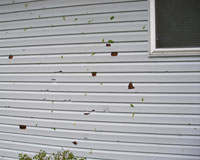 |
| Easy Damage to Identify |
Some hail damage is easy to spot – like when it knocks holes in your pool screen, or dents the metal or lead boots on your roof. But, just as significant is hail damage that can only be seen close up. Often when hail hits a roof it causes what is known as “degranulation” of the shingles. Degranulation can only be seen on close inspection by someone who knows what they are looking for. When hail causes degranulation the integrity of the shingle is compromised, and the serviceable life of the shingle is significantly shortened – all of which warrant roof replacement under your homeowners insurance policy.
If you are a homeowner that has recently been through a hailstorm and would like to inspect it for hail damage, the following quick guide will give you a basic understanding of what to look for.
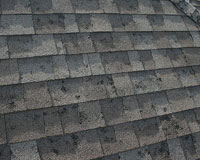 |
| Hail Hits on Asphalt Shingles |
Inspect your roof promptly after a storm: Any storm or wind alone can damage a roof, so the sooner you inspect the roof after a storm the better you can avoid leak damage inside the home, and if an insurance claim for roof damage is warranted, the better will be the data you can provide in support of your claim.
Inspect your roof gutters and on the ground: before and after a storm. If the gutters were clean and after the storm they are loaded with mineral granules you have strong evidence of roof wear and damage due to the hail storm.
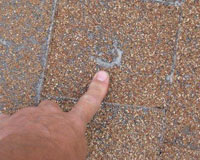 |
| Close-up Hail Hit |
If you spot a potential issue during your annual checkup or suspect any sort of wind or hail damage after a severe storm, you should always contact Curb Appeal Construction for a free roof inspection at 405.405.601.9222.4832. Our trained representative can discover hidden damage, separate hail damage from natural wear, educate you on your findings and make further recommendations on whether a repair or call to the insurance company is necessary.
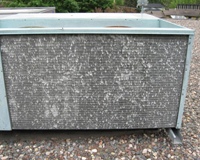 |
| HVAC Damage |
If you were around during the hailstorm and have an idea of the size that fell, it will give you a basis for what kind of roof hail damage to expect.
Less Than 1 Inch: When smaller than an inch, or about the size of a quarter, hail can inflict damage to asphalt roofing. Most often though a hail damaged roof at this size can be more difficult to identify. You may require the assistance of a trained roofing inspector to accurately identify any hail damage.
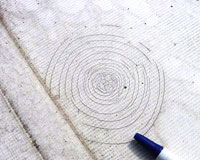 |
| TPO Damage |
1 Inch – 2 Inch: If the size is between 1 and 2 inches, or between quarter and egg size, hail damage should be more easily found on the asphalt shingles themselves as well as any soft metal on the roof.
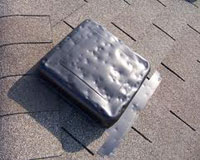 |
| Soft Metal Damage |
Greater Than 2 Inches: Any greater than 2 inches and it will almost guarantee some level of hail damage to an asphalt roof. If this is the case, contact your preferred roofing contractor for a full assessment of damages and notify the insurance company.
When searching for the hail damage to an asphalt roof, look at the following susceptible areas first:
 |
| Wood Shake Damage |
Soft Metal: First search for damage to any soft metal on the roof. Check roof vents, skylights, flashing, metal valleys, gutters and any other soft metal on the roof. Soft metal damage will not only show signs of hail, but also indicate the size of the hail that damaged the roof.
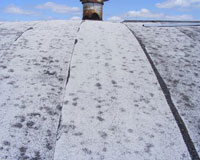 |
| Modified Bitumen Damage |
Ridges: The very peak of a ridge or ridge cap, will take a hail hit directly as opposed to the glancing blows on the main pitched roof slopes. Also due to their location, ridges are more susceptible to damaging hail hits regardless of the direction from which the hailstorm came.
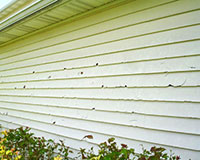 |
| Siding Damage |
Inspect your roof regularly, annually would be great, so that you can find and fix damage before it becomes a more costly leak. You can call Curb Appeal Construction for as we offer free roof inspections. 405.405.601.9222.4832